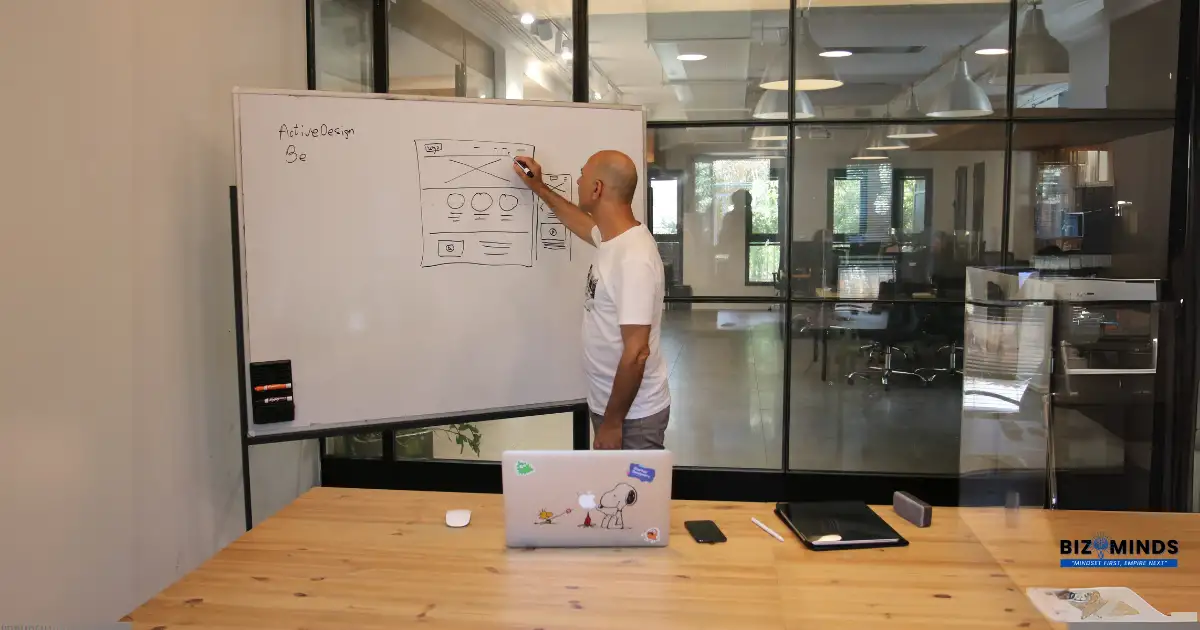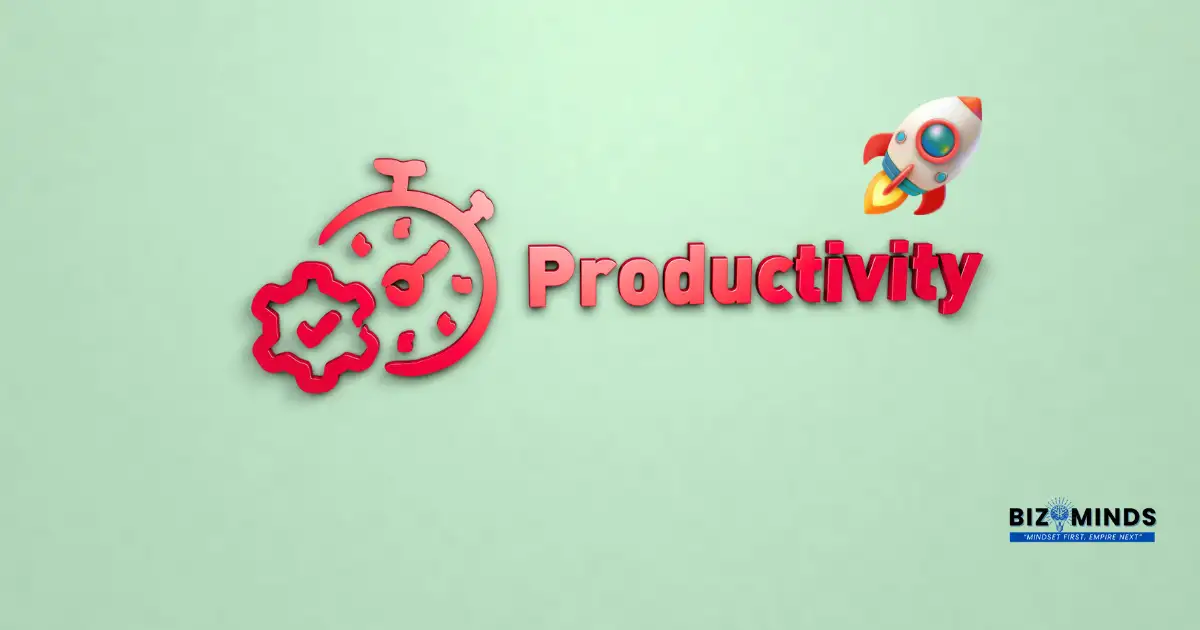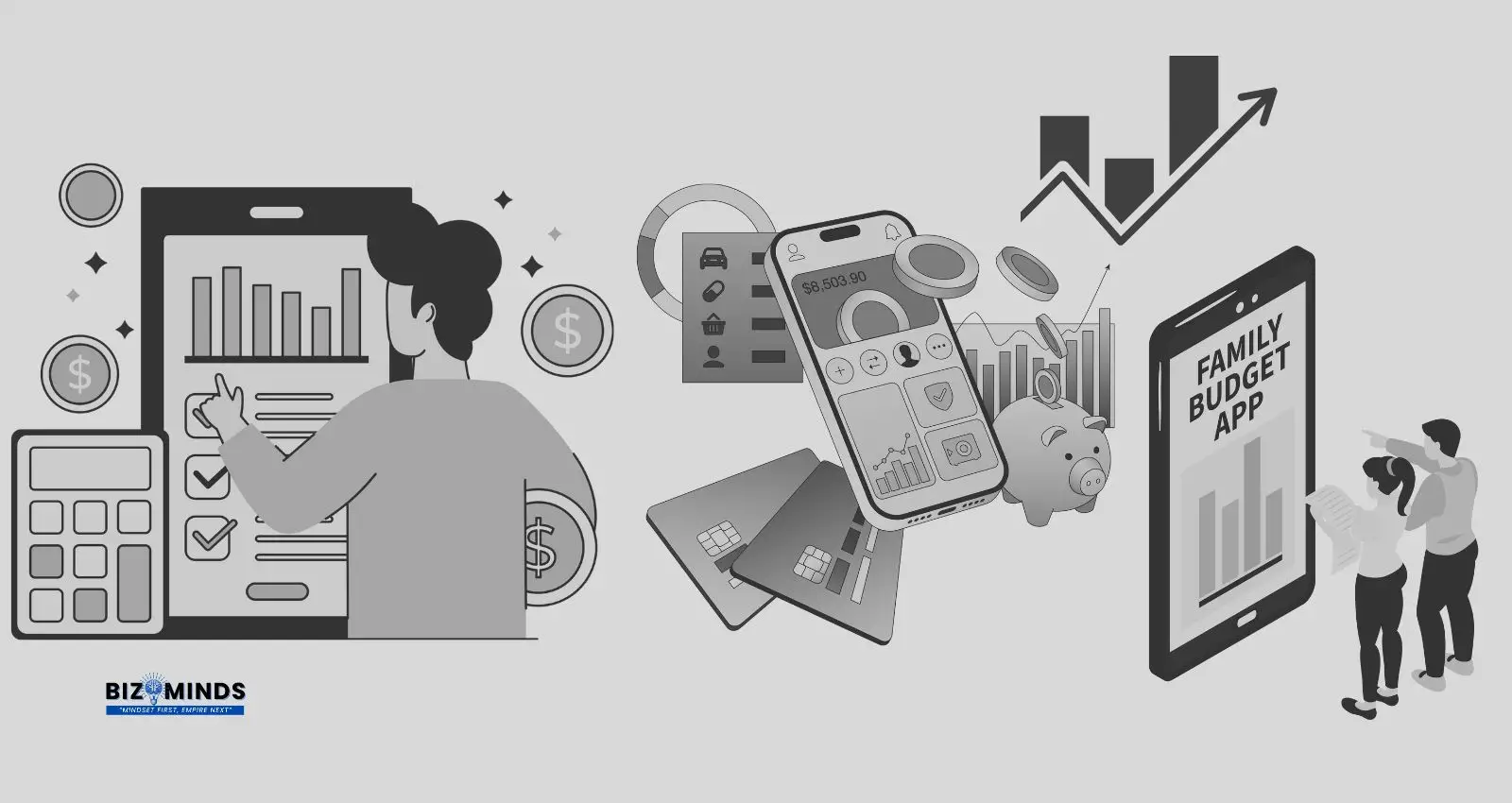

Supercharge Your Workflow: Pomodoro Technique Tips for Lasting Focus
In the fast-paced and demanding landscape of American workplaces, maintaining sustained attention has become a monumental challenge. Studies reveal that the average American employee loses focus every 47 seconds, and an overwhelming 79% struggle to maintain concentration for a full hour. This alarming reality highlights an urgent need for effective productivity solutions that can help professionals navigate a world filled with constant interruptions, digital distractions, and mounting workloads. The Pomodoro Technique emerges as a deceptively simple yet powerful tool designed to address these exact challenges and help individuals regain control over their workdays.
Originating from a college student’s inventive use of a tomato-shaped kitchen timer, the Pomodoro Technique has grown into one of the most trusted time management systems worldwide. Its core principle is straightforward: breaking down work into focused intervals, typically 25 minutes long, separated by short breaks. This rhythmic approach not only helps sustain concentration but harnesses the brain’s natural attention span, making productivity a manageable and less daunting task. It resonates particularly well with American workers, who often face high stress and digital overwhelm in bustling office environments or remote setups.
The statistics surrounding workplace distractions in the United States paint a sobering picture. On average, American employees lose over six hours every week due to interruptions and multitasking, and 80% report experiencing productivity anxiety. These figures underscore how fragmented attention diminishes not only individual output but also overall workplace morale and well-being. In such an environment, the Pomodoro Technique offers more than just a method—it provides a structured and soothing rhythm that turns overwhelming projects into approachable chunks, enabling better focus and reducing mental fatigue.
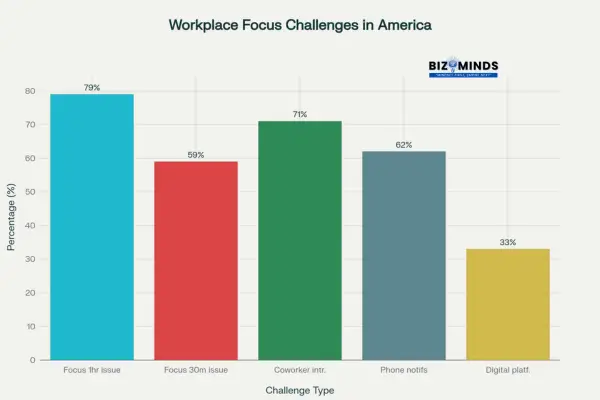
Workplace Focus Challenges in the USA – Statistics on employee distraction and attention span issues
Understanding these dynamics, this comprehensive guide dives deep into the Pomodoro Technique, illustrating how you can implement this method to reclaim your productivity, reduce stress, and align your work habits with the natural capacities of your brain. It is designed to equip American professionals with practical insights and strategies to maximize efficiency without sacrificing mental health or work-life balance.
By adopting the Pomodoro Technique, you can not only overcome the pervasive distractions and productivity anxiety endemic to today’s work culture but also build sustainable habits that enhance focus, creativity, and satisfaction. This method stands as a beacon of simplicity and effectiveness in an often chaotic work environment, promising a renewed sense of accomplishment and control over your workflow.
Origins and Scientific Foundation of the Pomodoro Technique
From its beginnings in the 1980s, the Pomodoro Technique has advanced to support the evolving dynamics of productivity. Originally designed for university students, it has adapted to fit the needs of modern professionals navigating digital distractions, remote work environments, and increasingly hybrid office cultures prevalent across the United States. Today, the technique integrates seamlessly with digital tools and incorporates flexibility that respects different workstyles, making it more relevant than ever in the fast-paced American professional landscape.
Francesco Cirillo developed this groundbreaking productivity method in the late 1980s while struggling as a university student in Italy. Overwhelmed by a heavy workload and the challenge of maintaining focus, he ingeniously used a simple tomato-shaped kitchen timer to structure his study sessions into focused 25-minute intervals, separated by short breaks. This innovative approach sparked the Pomodoro Technique—a time management system now embraced by over 2 million people across the globe, especially in the United States where productivity challenges are widespread.
The Pomodoro Technique’s effectiveness is deeply rooted in psychological science. Research from the University of California reveals that the average person can only sustain focused attention for about 12 minutes before being interrupted, and it takes more than 23 minutes to fully regain concentration after a disruption. By working in structured 25-minute blocks, the Pomodoro Technique aligns perfectly with these natural attention spans, fostering artificial urgency that effectively combats procrastination and distraction.
Recent research further validates the Pomodoro Technique’s impact. A study published in PMC showed that systematic break-taking, a hallmark of the Pomodoro Technique, enhances concentration levels, boosts motivation, and decreases the perceived difficulty of tasks compared to self-regulated work patterns. Those who followed interval-based work reported feeling more productive and less mentally drained, highlighting how the Pomodoro Technique improves both efficiency and well-being.
The 6-Step Core Process of the Pomodoro Technique
Visualized in the accompanying flowchart, the Pomodoro Technique consists of six fundamental steps that create an intuitive yet highly effective work rhythm:
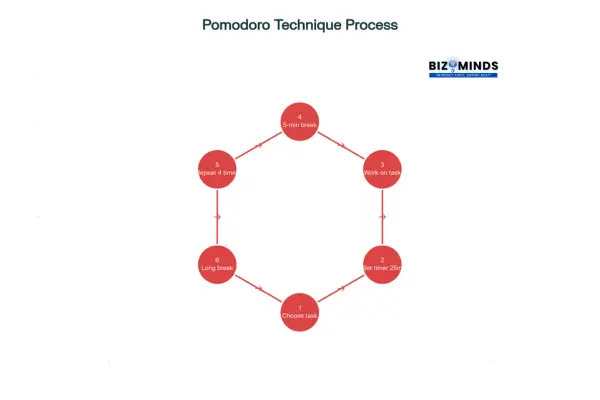
The 6-Step Pomodoro Technique – A visual guide to implementing the time management technique
The 6-Step Pomodoro Process:
- Step 1: Task Selection
Clearly define the specific task to focus on before starting. This step reduces context switching, which can lower productivity by up to 40%, according to research. - Step 2: Timer Configuration
Set a timer for exactly 25 minutes. This duration strikes a balance between sustaining attention and preventing fatigue, creating a productive pressure that motivates work. - Step 3: Focused Work
Spend the whole 25-minute focus interval working solely on the chosen task without distractions. Minimize distractions by avoiding multitasking or checking messages. If urgent thoughts arise, jot them down for later review to maintain focus uninterrupted. - Step 4: Short Break
At the end of each Pomodoro cycle, pause for a compulsory 5‑minute break to boost productivity. Short breaks enable mental recovery, preventing the buildup of fatigue throughout your workday. - Step 5: Cycle Repetition
Repeat this work-break cycle four times, forming a substantial two-hour block of focused work while sustaining mental freshness. - Step 6: Extended Break
After four cycles, enjoy a longer 20-30 minute break to restore energy deeply and prepare for the next focus session.
Multimedia and Interactive Elements
Engage visitors by incorporating interactive elements such as:
- Embedded Pomodoro timers that visitors can start directly on the page
- Downloadable or printable Pomodoro planner templates
- Infographics summarizing intervals and benefits
- Video tutorials demonstrating best practices
These productivity tools strengthen learning and support hands-on application of time management strategies like Pomodoro technique.
Scientific and Psychological Insights
Beyond its practical steps, the Pomodoro Technique is grounded in robust neuroscience and cognitive psychology. Focused work taps into the brain’s executive control functions, while systematically timed breaks promote memory consolidation and creative incubation. Cognitive load theory supports breaking work into manageable segments to prevent overload, improving both retention and mental clarity. Recent American psychological studies underscore how these short rest periods recharge neural pathways, enhancing sustained attention and problem-solving skills critical in today’s knowledge-driven economy.
Transformative Benefits for American Professionals
Cognitive Enhancement
- Only 41% of American workers can focus continuously for 30 minutes or more, making sustained attention a major hurdle. Through structured 25‑minute intervals, the Pomodoro Technique enhances productivity while gradually improving focus and attention span.
- Incorporating frequent breaks mitigates mental fatigue, a leading factor undermining productivity across industries.
- This harmonious approach optimizes cognitive performance by respecting natural attention rhythms.
Productivity Amplification
Task completion rates improve dramatically when large projects are divided into manageable 25-minute segments. This approach directly addresses the procrastination epidemic that costs American businesses billions annually in lost productivity.
The method also enhances time estimation accuracy. Most professionals significantly underestimate task duration, leading to schedule disruptions and stress. Regular interval-based work develops more realistic time perception and better project planning capabilities.
| Benefit | Impact Level | Time to See Results | Research Support |
| Increased Focus Duration | High | 1-2 weeks | Strong |
| Reduced Procrastination | Very High | 3-5 days | Strong |
| Better Time Estimation | High | 2-3 weeks | Moderate |
| Reduced Mental Fatigue | High | 1 week | Strong |
| Improved Task Completion | Very High | 1-2 weeks | Strong |
| Enhanced Work-Life Balance | Medium | 3-4 weeks | Moderate |
| Stress Reduction | High | 1-2 weeks | Strong |
| Better Planning Skills | Medium | 2-3 weeks | Moderate |
- Dividing large, overwhelming projects into manageable 25-minute tasks makes progress easier and more tangible.
- Tackles the nationwide productivity challenge in the USA, fueled by procrastination and billions in annual losses.
- Improves accuracy in time estimation as frequent intervals train workers to better assess task duration, reducing scheduling errors and stress.
Stress Reduction and Well-being
Beyond productivity gains, adopting the Pomodoro Technique positively influences work-life balance and mental health. By dividing work into defined intervals with mandatory breaks, professionals can prevent burnout, reduce anxiety related to overwhelming workloads, and cultivate healthier boundaries between work and personal time. This balance promotes overall life satisfaction, an increasingly prioritized metric in American workplace wellness programs.
- In the USA, workplace stress costs businesses $483–605 billion in lost productivity each year. The Pomodoro Technique breaks overwhelming tasks into smaller, manageable intervals, helping ease anxiety.
- Prevents the buildup of mental tension by scheduling regular recovery pauses, fostering better work-life balance and reducing burnout risk.
Strategic Implementation for Maximum Success
Initial Setup and Environment Preparation
- Create physical and digital boundaries to decrease distractions; 71% of workplace interruptions stem from coworkers. Use noise-canceling headphones or clear “focus time” signals.
- Select work suited to interval management: complex analytical tasks, writing, or deep learning benefit most; routine or collaborative tasks may require flexible strategies.
Planning and Task Breakdown
- Each morning, list 3-5 priority tasks and estimate the number of Pomodoro intervals needed for each.
- Break large projects into smaller components that fit comfortably within 25-minute intervals.
- Track completed Pomodoros and task progress for motivation and improved future planning.
Handling Interruptions and Distractions
- Implement an “inform-negotiate-schedule-callback” protocol to manage urgent interruptions during focus time.
- Use a distraction capture sheet to jot down distracting thoughts without breaking focus, to be reviewed during breaks.
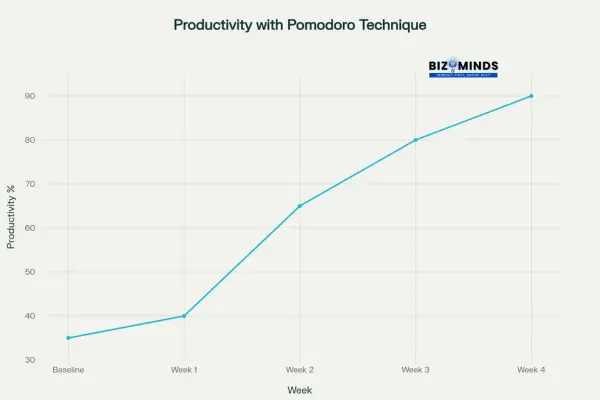
Productivity Improvement Timeline – Expected progress over 4 weeks of Pomodoro Technique implementation
Advanced Optimization Strategies
Effectiveness increases when the Pomodoro Technique is personalized. Individuals should consider their chronotype and job demands to tailor session lengths—morning people might tackle demanding tasks early, while night owls could shift intensive intervals to later hours. Personality traits also guide customization; for example, those with high openness may prefer longer creative bursts, while detail-oriented individuals might benefit from shorter, intense sessions. Experimentation within the method’s framework allows you to find the optimal balance for your productivity rhythm.
Customizing Interval Duration
- While 25 minutes is optimal for many tasks, adapt timing depending on workload:
- Creative work may require longer “Flowtime” periods (45-90 minutes).
- Administrative tasks may benefit from shorter bursts (15 minutes).
- Deep technical work can extend intervals to 50 minutes followed by 10-minute breaks.
Integration with Other Productivity Systems
- Combine Pomodoro intervals with Getting Things Done (GTD) or time-blocking frameworks to enhance task management.
- Teams can synchronize intervals to improve collective focus, minimizing interruptions during critical periods.
Workplace Adoption in American Companies
- Poor attention management costs Fortune 500 companies an estimated 25 billion work hours yearly. The Pomodoro Technique offers a tangible solution.
- Encourage team-wide adoption to amplify benefits through cultural support around focused work periods.
Common Implementation Pitfalls
- Modifying interval lengths without understanding their purpose may hurt focus; avoid extending work beyond 30 minutes without appropriate breaks.
- Skipping or shortening breaks undermines mental recovery and decreases effectiveness.
- Perfectionism and inconsistent application can stall progress; focus on consistency over perfection.
- Skip using this method for tasks that require group interaction, like brainstorming sessions or team meetings.
- Choose simple timers to minimize distraction; apps like Forest, Focus Keeper, and Toggl Track are popular in the U.S. for their simplicity and functionality.
Common Myths and Misconceptions
Despite its popularity, the Pomodoro Technique is subject to several misconceptions that may hinder its adoption:
- Myth: It’s only for students — In reality, the technique benefits professionals across industries, from engineering to healthcare.
- Myth: It’s too rigid for creative work — Many creatives adapt interval lengths to suit their workflow while enjoying improved focus.
- Myth: Longer work periods are always better — Scientific evidence favors shorter, structured work phases with breaks for sustained focus and reduced fatigue.
Measuring Progress and Success
Track key metrics including:
- Number of Pomodoros completed daily.
- Accuracy of task time estimation.
- Subjective ratings of focus quality and satisfaction.
- Understand that habit formation takes time—most see improvements within 3-5 days, reaching rhythm after 2-3 weeks.
- Begin with a manageable number of intervals per day, increasing gradually to build confidence and sustainable habits.
- Conduct weekly reviews to refine interval lengths, break durations, and task planning based on personal performance data.
While the Pomodoro Technique offers a distinct method centered on focused intervals, several other productivity systems cater to different preferences and task types. Methods like Time Blocking emphasize scheduling specific hours for tasks, Getting Things Done (GTD) focuses on comprehensive task organization, and the Eisenhower Matrix prioritizes tasks by urgency and importance. Below is a comparison to help determine the best fit for your workflow:
| Technique | Focus | Structure | Best For | Complexity |
| Pomodoro Technique | Time intervals & breaks | 25-min cycles | Focus & procrastination | Beginner |
| Time Blocking | Scheduled calendar slots | Flexible blocks | Planning & multitasking | Intermediate |
| Getting Things Done | Task organization | Workflow system | Task-heavy workflows | Advanced |
| Eisenhower Matrix | Urgency & importance | Prioritization | Decision-making | Beginner/Intermediate |
By weaving the Pomodoro Technique’s proven principles with careful planning, realistic expectations, and adaptation for the American work environment, professionals can overcome common productivity barriers. This technique not only helps to conquer the epidemic of distractions but also fosters healthier work habits that sustain long-term success.
The incorporation of the Pomodoro Technique into your work routine can meaningfully improve concentration, reduce stress, and enhance overall productivity—making it an essential tool in today’s demanding professional landscape.
Professional Applications Across Industries
Knowledge Workers
The Pomodoro Technique proves invaluable for knowledge workers such as software developers, writers, and data analysts, who often grapple with complex, cognitively demanding tasks. Structured focus periods help manage large projects by breaking them into manageable 25-minute intervals. This prevents the mental fatigue commonly experienced during extended periods of continuous work, such as marathon coding sessions or lengthy writing projects.
- Reduces cognitive overload by allowing periodic mental resets
- Enhances code quality by improving sustained attention and reducing errors
- Supports writers and analysts in maintaining creative flow without burnout
- Many leading American tech companies now encourage the use of interval-based work to boost productivity and reduce bug rates
By embedding the Pomodoro Technique into daily routines, knowledge workers can achieve sustained peak performance, balancing efficiency with mental well-being.
Students and Academics
The method shines in educational contexts, where prolonged mental engagement is critical. Research indicates that students who employ structured break patterns like the Pomodoro Technique show higher engagement rates and improved retention compared to traditional study methods.
- Particularly effective for dissertation writing, prepping for exams, and complex research projects
- Prevents study fatigue by segmenting long study hours into focused intervals
- Boosts motivation and combats procrastination with visible progress tracking
- Encourages disciplined yet flexible study habits, essential for academic success across American universities
This structured approach aligns well with student needs, enabling better academic performance while supporting mental health.
Creative Professionals
While creative endeavors often demand longer periods of uninterrupted thought, the Pomodoro Technique remains valuable for many creative professionals, including designers, artists, and editors. It is especially useful during technical and execution phases of creative projects, such as editing, revisions, and administrative tasks.
- Provides a framework for maintaining focus during repetitive or detail-oriented aspects of creative work
- Facilitates bursts of productivity without creative burnout
- Allows space for mental rest, promoting better idea incubation during breaks
- Helps balance the unpredictable rhythms of inspiration with disciplined task completion
Creative professionals can tailor interval durations to fit their workflow, blending structured focus with the flexible nature of artistic work.
Pomodoro Technique for Remote Work
For the millions of Americans working remotely, the Pomodoro Technique offers structured time boundaries essential for productivity and mental well-being. Remote workers often struggle with blurred lines between professional and personal time, and constant digital distractions. Implementing timed intervals helps establish daily routines, minimize multitasking, and reduce feelings of isolation by providing predictable work rhythms conducive to focus and recovery.
Healthcare and Service Industries
Professionals working in high-stress healthcare and service sectors benefit significantly from adapting interval-based work strategies. In these emotionally and physically demanding roles, the Pomodoro Technique teaches how to manage workloads effectively while ensuring critical mental recovery.
- Structured breaks provide essential time to decompress and reset during hectic shifts
- Helps prevent burnout and compassion fatigue by encouraging regular mental rest periods
- Supports effective task prioritization amidst unpredictable work demands
- Enhances overall resilience and job satisfaction by fostering healthier work rhythms
By integrating interval techniques, healthcare and service workers can maintain performance while protecting their mental and physical well-being.
Case Studies or Real-Life Examples
American companies and professionals regularly share success stories stemming from Pomodoro adoption. For instance, a San Francisco-based software startup reported a 30% increase in developer output and a 20% drop in bug reports after integrating synchronized Pomodoro sessions across teams. University students at Texas A&M embraced the technique during finals week, citing increased focus and reduced stress as key outcomes. These real-world applications highlight the technique’s versatility and effectiveness across diverse professional and academic settings.
Technological Integration
Digital Tools and Applications
In the American market, numerous timer applications facilitate the Pomodoro Technique, ranging from minimalist countdown timers to advanced productivity suites. Selecting the right tool is essential to complement rather than overcomplicate your workflow.
- Prioritize tools with reliable timing accuracy and minimal distractions
- Features to look for include simple session logging, task categorization, and gentle notifications during breaks
- Popular apps such as Forest, Focus Keeper, and Toggl Track are widely used and highly regarded in U.S. workplaces
Choosing technology that supports the Pomodoro Technique rather than detracts from it is crucial for maintaining your productivity flow.
Avoiding Digital Distractions
Digital distractions pose a significant challenge, with 62% of American workers citing phone notifications as major productivity killers. Successful use of the Pomodoro Technique requires disciplined digital management.
- Consider activating airplane mode or ‘Do Not Disturb’ settings during focus intervals
- Use dedicated “work-only” devices or apps configured to suppress non-essential notifications
- Establish protocols with colleagues to minimize interruptions during focus blocks
Proactively managing digital distractions allows the Pomodoro Technique to function at maximum efficiency.
Building Long-term Success
Creating Sustainable Habits
Research in habit formation highlights that consistency outweighs intensity during early stages of new routines. Embedding the Pomodoro Technique into daily habits requires gradual, steady practice.
- Focus on establishing a reliable, repetitive practice rather than maximizing daily interval numbers immediately
- Environmental cues—such as dedicated workspace and consistent start times—enhance habit development
- Using the same timer tool daily reinforces automaticity and reduces decision fatigue
By nurturing small, sustained behavior changes, the Pomodoro Technique transforms into a lasting productivity habit rather than a fleeting experiment.
Overcoming Resistance and Setbacks
Encountering challenges during implementation is normal and expected. Common obstacles include difficulty maintaining the discipline to take breaks, managing interruptions, and adapting to structured time when accustomed to flexible work.
- Address issues systematically rather than abandoning the technique
- Modify interval lengths or break durations to better suit your personal workflow while maintaining core principles
- Seek social support or accountability partnerships to reinforce consistency
Resilience in overcoming these barriers is key to integrating the Pomodoro Technique as a dependable productivity tool.
Integration with Organizational Culture
Managers play a critical role in supporting the Pomodoro Technique’s adoption at the team level. Leadership can facilitate effectiveness by:
- Scheduling core Pomodoro blocks with protected focus times
- Encouraging transparency about focused sessions with shared calendars or status indicators
- Promoting a culture that values breaks as essential to sustained productivity
- Providing training and resources to familiarize teams with interval work benefits
For managers or team leaders aiming to implement this methodology at scale, cultural integration is essential for success.
- Establish clear norms around respecting colleagues’ focused work periods and minimizing unnecessary interruptions
- Develop policies that support and incentivize concentrated work blocks alongside regular breaks
- Encourage team-wide adoption to foster shared productivity rhythms and enhance collective output
Embedding the Pomodoro Technique within an organization’s culture maximizes its effectiveness, creating a supportive environment where sustained attention and productivity flourish.
Incorporating the Pomodoro Technique into daily professional lives across industries can yield transformative results. From knowledge workers striving for peak cognitive performance, to healthcare professionals battling burnout, to students sharpening their academic focus, this time-tested method offers a universal framework for increased productivity and well-being. The strategic use of technological tools and commitment to sustainable habits ensures that the Pomodoro Technique is not just a productivity hack, but a lifelong ally in managing the complexities of modern work.
By mastering this technique, professionals in the United States can turn chaotic, distraction-filled work environments into arenas of focused, purposeful achievement.
Conclusion
The Pomodoro Technique offers a remarkably simple yet highly effective framework for overcoming the pervasive challenges of focus, procrastination, and mental fatigue in the American workplace. By breaking work into focused 25-minute intervals followed by structured breaks, it aligns with our brain’s natural attention rhythms, making even daunting projects manageable. This method fosters not only enhanced productivity but also improved mental well-being by preventing burnout and building sustainable work habits that support long-term success.
The science behind the Pomodoro Technique is robust, with numerous studies demonstrating its ability to increase concentration, reduce perceived task difficulty, and reframe time from a source of anxiety into a quantifiable measure of accomplishment. As many American workers face unprecedented distraction levels and productivity anxiety, this technique provides a practical, science-backed tool that empowers individuals to regain control over their workday. Its adaptability across various industries and roles—from tech developers to healthcare professionals—underscores its universal relevance and effectiveness.
Moreover, the Pomodoro Technique instills a sense of achievement and gamifies productivity, offering motivation through clear progress markers and manageable task segments. Whether employed individually or at a team level within organizational cultures, it encourages a mindful approach to work and rest. By promoting regular breaks and focused effort, it nurtures a healthier work-life balance, which is increasingly vital for sustaining morale and job satisfaction in today’s fast-paced work environments.
Adopting the Pomodoro Technique is not merely about time management—it is about cultivating a mindset of discipline, self-awareness, and resilience. With patience and consistent practice, professionals can transform how they approach tasks and manage distractions. This technique ultimately empowers you to work smarter, reduce stress, and achieve greater satisfaction in both professional accomplishments and personal well-being.
Also read our deeply researched and well organized article published on our website on Productivity Hacks, “12 Life-Changing Productivity Hacks Backed by Research“
Frequently Asked Questions
Q1: How long does it typically take to see productivity improvements?
Most practitioners notice initial benefits within 3-5 days, with significant improvements developing over 2-3 weeks. However, full mastery and habit formation typically requires 4-6 weeks of consistent practice.
Q2: Can I modify the 25-minute intervals for different types of work?
Yes, while 25 minutes works optimally for most tasks, you can adjust intervals based on work type. Creative tasks might benefit from 45-50 minute sessions, while administrative work could use 15-minute intervals. The key is maintaining consistent work-break cycles.
Q3: What should I do if I’m frequently interrupted during work intervals?
Develop an interruption protocol using the “inform-negotiate-schedule-callback” strategy. Politely inform the interrupter that you’re in a focused work period, negotiate urgency level, schedule time to address their need, and call them back as promised.
Q4: Is it better to use apps or a simple timer?
Both can be effective. Simple timers minimize digital distractions, while apps offer features like session tracking and statistics. Choose based on personal preference, but prioritize simplicity over complexity to avoid the tool becoming another distraction source.
Q5: How do I handle tasks that take longer than 25 minutes?
Break large tasks into smaller components that fit within single intervals. If a task naturally requires longer focus periods, consider using extended intervals (45-50 minutes) or plan multiple consecutive sessions with breaks between them.
Q6: Can I use this technique for creative work like writing or design?
Absolutely. Many writers and designers find intervals helpful for maintaining momentum while preventing creative burnout. Use intervals for focused execution phases, with breaks providing time for reflection and idea development.
Q7: What happens if I wrap up my work before the 25‑minute timer goes off?
Continue working on the task through review, improvement, or related preparation until the timer rings. This “overlearning” period reinforces knowledge and skills while maintaining interval discipline.
Q8: How many intervals should I aim for daily?
Start with 3-4 intervals per day and gradually increase based on comfort and results. Most professionals find 8-12 intervals (4-6 hours of focused work) represents a productive full workday.
Q9: Should I take breaks even if I feel energized and want to continue working?
Yes, breaks are mandatory regardless of energy levels. Mental fatigue accumulates even when not immediately noticeable, and regular breaks prevent performance degradation that occurs with extended focus periods.
Q10: Can teams use this technique together?
Yes, synchronized team intervals can be highly effective. Establish group work blocks where all members work in parallel intervals, reducing mutual interruptions while maintaining collective focus on team objectives.
Q11: Is this technique suitable for people with ADHD or attention difficulties?
Many people with ADHD find the structured approach helpful, though modifications may be necessary. Shorter initial intervals (10-15 minutes) or longer breaks might work better. Consult with healthcare providers for personalized recommendations.
Q12: How do I maintain motivation when the novelty wears off?
Track your progress through completion logs and productivity metrics. Celebrate milestones, adjust the approach to prevent boredom, and focus on long-term benefits rather than daily perfection. Consider joining online communities for ongoing support and accountability.





